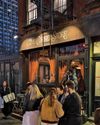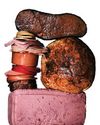SOMETIMES YOU DON’T KNOW how deep the hole is until you try to fill it. In 2009, staring down what looked to anyone with a calculator like the biggest financial crisis since 1929, the federal government poured $830 billion into the economy—a spending stimulus bigger, by some measures, than the entire New Deal—and the country barely noticed.
SOMETIMES YOU DON’T KNOW how deep the hole is until you try to fill it. In 2009, staring down what looked to anyone with a calculator like the biggest financial crisis since 1929, the federal government poured $830 billion into the economy—a spending stimulus bigger, by some measures, than the entire New Deal—and the country barely noticed. It registered the crisis, though. The generation that came of age in the Great Depression was indelibly shaped by that experience of deprivation, even though what followed was what Henry Luce famously called, in 1941, “the American Century.” He meant the 20th, and, to judge from our present politics, at least—“Make America Great Again” on one side of the aisle; on the other, the suspicion that the president is a political suicide bomber, destroying the pillars of government—he probably wouldn’t have made the same declaration about the 21st. A decade now after the beginning of what has come to be called the Great Recession, and almost as long since economic growth began to tick upward and unemployment downward, the cultural and psychological imprint left by the financial crisis looks as profound as the ones left by the calamity that struck our grandparents. All the more when you look beyond the narrow economic data: at a new radical politics on both left and right; at a strident, ideological pop culture obsessed with various apocalypses; at an internet powered by envy, strife, and endless entrepreneurial hustle; at opiates and suicides and low birthrates; and at the resentment, racial and gendered and otherwise, by those who felt especially left behind. Over the following pages, we cast a look back, and tried to take a seismic reading of the financial earthquake and its aftershocks, including those that still jolt us today.
AMERICA STOPPED BELIEVING IN THE AMERICAN DREAM
Denne historien er fra August 6, 2018-utgaven av New York magazine.
Start din 7-dagers gratis prøveperiode på Magzter GOLD for å få tilgang til tusenvis av utvalgte premiumhistorier og 9000+ magasiner og aviser.
Allerede abonnent ? Logg på
Denne historien er fra August 6, 2018-utgaven av New York magazine.
Start din 7-dagers gratis prøveperiode på Magzter GOLD for å få tilgang til tusenvis av utvalgte premiumhistorier og 9000+ magasiner og aviser.
Allerede abonnent? Logg på

Trapped in Time
A woman relives the same day in a stunning Danish novel.

Polyphonic City
A SOFT, SHIMMERING beauty permeates the images of Mumbai that open Payal Kapadia's All We Imagine As Light. For all the nighttime bustle on display-the heave of people, the constant activity and chaos-Kapadia shoots with a flair for the illusory.

Lear at the Fountain of Youth
Kenneth Branagh's production is nipped, tucked, and facile.

A Belfast Lad Goes Home
After playing some iconic Americans, Anthony Boyle is a beloved IRA commander in a riveting new series about the Troubles.

The Pluck of the Irish
Artists from the Indiana-size island continue to dominate popular culture. Online, they've gained a rep as the \"good Europeans.\"

Houston's on Houston
The Corner Store is like an upscale chain for downtown scene-chasers.

A Brownstone That's Pink Inside
Artist Vivian Reiss's Murray Hill house of whimsy.

These Jeans Made Me Gay
The Citizens of Humanity Horseshoe pants complete my queer style.

Manic, STONED, Throttle, No Brakes
Less than six months after her Gagosian sölu show, the artist JAMIAN JULIANO-VILLAND lost her gallery and all her money and was preparing for an exhibition with two the biggest living American artists.

WHO EVER THOUGHT THAT BRIGHT PINK MEAT THAT LASTS FOR WEEKS WAS A GOOD IDEA?
Deli Meat Is Rotten